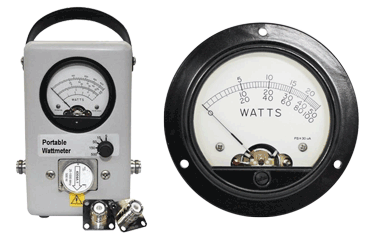Portable Wattmeters: What Are They?
Published by Joe Legerstee

Analog Portable Wattmeters: What Are They?
Analog Portable Wattmeters are portable insertion-type instruments that measure forward and reflected power in coaxial transmission lines. In simple terms, power behaves like a wave of water. There is a forward wave which moves toward the source and a reflected wave moving in the reverse direction. These two waves together produce a standing wave. Ideally, a design engineer will match the circuit impedance so that it can deliver the most real power. This value is typically 50 Ω. When there is a mismatch between the load impedance and the transmission line, part of the forward wave sent toward the load is reflected back along the transmission line towards the source. To detect when the antenna is matched, a portable wattmeter can be used any place in the line. These instruments can be left in the line for continuous monitoring of either the transmitter power output or the amount reflected by the antenna.

These two quantities are actually the most important transmission parameters: Tuning for the minimum reflected power results in a good match of the load (antenna) to the line, and adjusting the transmitter for maximum forward power into a matched antenna approaches ideal design goals, these optimum system adjustments result in a low Voltage Standing Wave Ratio.
Hoyt Electrical Instrument Works has been supplying the Industrial 3.5” 582 DC Analog Panel Meter or the 4.5” 4045 DC Analog Panel Meter for these applications for several years. They typically are setup with our standard proven pivot & jewel movement. The dials are setup to reference RF Watts and the meter is measuring very low DC current. These rugged meters are designed and built for severe environments. These gasket and sealed meters provide protection from shock and vibration while protecting from industrial chemicals and environments. Meters are available with a back light for dim and no light areas. For low current applications or where sensitivity is key, a taut band movement is available.
ADDITIONAL RESOURCES
- Scholl, R.A.: Forward and reflected powers, what do they mean? White Paper. Advanced Energy Industries, Inc. (1998)
- Bird: RF Wattmeters and Line Sections.
More information:

